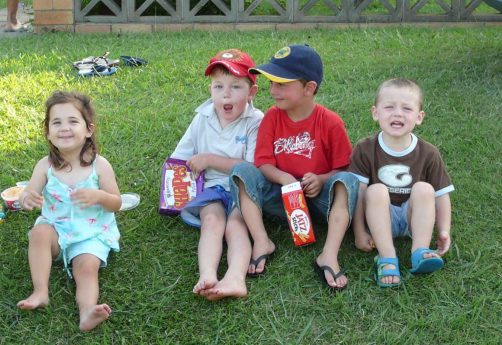
Book Review. Parenting With a Story: Real-life Lessons in Character for Parents and Children to Share

Ask any parent what they want for their children, and you will get a variety of answers: happiness, success, good health, employment, the list goes on and on. But at the end of the day, we want our children to become responsible, helpful adults. People who, through the way they conduct themselves: in relationships, in the workplace, and in the community; will make the world a better place.
On a daily basis we try and instill good character traits in our children. “Show respect”, “Be kind to your brother”, “If you haven’t got anything nice to say, don’t say anything at all”. Our words seem to have little or no success in teaching about what is right or wrong, and even less impact on present or future behaviour. We (parents and young people) get tired of saying or hearing the same things over and over again.
In ‘Parenting with a Story‘ author Paul Smith, an expert in organizational storytelling, has gathered 101 narratives from people around the world and from all walks of life. The stories are about times when they learned an important life lesson which then shaped the person they have become. These include mistakes, regrets, successes and failures, times when they admired someone or faced fears, things they wish they had done and things they wish they hadn’t.
The book has two sections: the first, “Who you are“, contains stories relating to personal character traits. These include open mindedness, curiosity, courage, creativity and grit. The second section “How you treat others“, contains stories illuminating the power of kindness, patience, gratitude, forgiveness, respect, and other characteristics every parent desires for their children. It is hoped that these stories will be used by parents to illustrate to children how choices and consequences play out in the real world.
So Smith encourages us to use the age old tradition of storytelling to impart wisdom to our children. He gives 101 stories to use when life provides us with a ‘teachable moment’, and a handy reference table (downloadable from his website) as a prompt. There is also a chapter on storytelling, with tips for those who feel ill equipped to tell stories, and are wondering how to proceed.
The stories run from humorous to heart-wrenching, and obviously some will resonate deeply whilst others are quickly forgotten. I am not sure what percentage of readers will actually relate the given stories to their children. But ultimately that is not important, as the book changes the reader in many ways.
Smith opens the door for us to find our own stories. He highlights the power and influence of storytelling, and invites you to use this method in your own life. We all have stories, and everyone we know has stories. To assist us, the book contains a list of questions Smith found particularly helpful in generating stories during his interviews.
Parenting With a Story inspires parents to chat to friends, neighbours, relatives and colleagues. To collect stories and use them to illustrate the effect of character traits on lives, in a meaningful and memorable way. Smith’s book and my own experiences, have convinced me that storytelling will have a far greater impact on our children’s understanding of character, than the relentless commands and mini-lectures we issue, that are ignored or forgotten as soon as we have finished uttering them.
Paul Smith, 2015, ‘Parenting With a Story: Real-life Lessons in Character for Parents and Children to Share”, AMACOM, New York, USA.
“Tell a young person what to do – play fair, be yourself, stick to the task at hand – and most will tune you out. But show them how choices and consequences play out in the real world, with real people, and the impact will be far more profound.” Paul Smith


